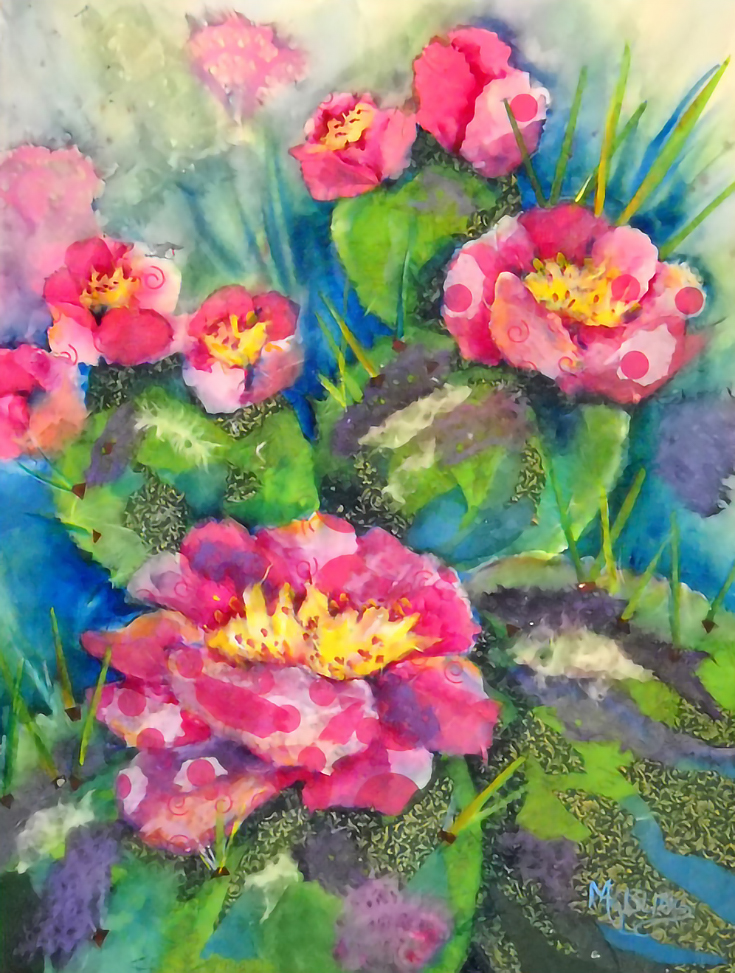After discovering the beauty and freedom of watercolors over twenty years ago, I instantly fell in love with the spontaneous nature of this medium.
I love to see pure transparent colors flowing freely over wet paper, forming exciting shapes and patterns out of nothing. The challenge, then, is to paint just enough detail to create images and impressions, so the viewer can fill in the rest with their own imagination.
In addition, for the last several years I have been combining collage elements (like decorative papers and tissues) with my watercolors.
Here’s the process I use:
My first step is to lightly sketch in the basic shapes of my subject. In this case, it was a cactus and some flowers. I then wet the paper and painted in some of the initial colors to give me a starting point and an overall feel for the composition.
After the paint dried, I used a matte medium to glue on some collage papers for the flowers—these were mostly tissue papers in solid pink colors, but a few had designs or patterns on them.
Some green papers were collaged on—mostly tissue again, although the dark green for the shadows was a heavier paper with metallic gold flecks (the metal doesn’t show up in the photograph very well).
I added more collage to the flowers, and then painted the negative spaces around the cactus and blooms for more definition.
I continued adding paper and paint, gradually building up texture. I also used some decorative, lace-like rice papers that I had previously stained with some watercolor.

More paint was added to the background, then the flowers, then I added more collage, more paint. . . and so on, until I felt like it was done.
Sometimes, the hardest part is knowing when to stop, but in this case I’m glad I went as far as I did. If you need to jazz up your own watercolor paintings, go ahead and give this technique a try for yourself. . . you won’t be disappointed!
To read more articles by Martha, please visit www.marthakisling.blogspot.com.
This post may contain affiliate links.

